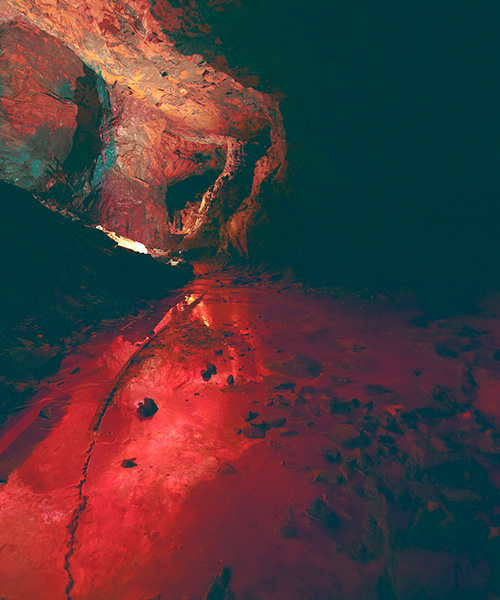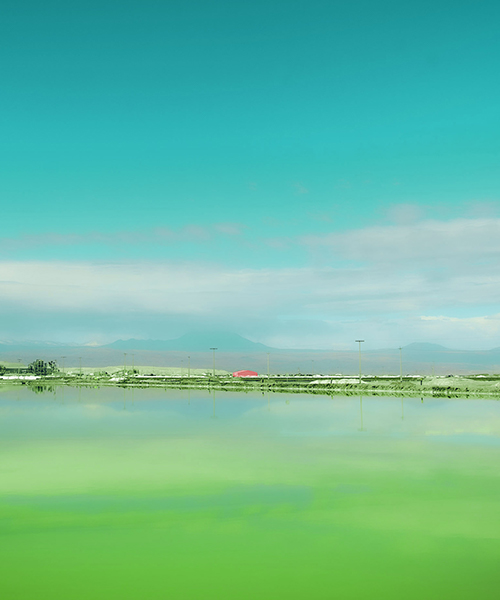May 26, 2023 • 3 min read
How can copper miners better balance their water and energy consumption?
Copper mining depends on water. But accessing water requires a lot of energy. How can copper miners find a sustainable and cost-effective balance?
“Many of the world’s largest copper deposits are in the driest regions on earth,” says Saleem Varghese, Copper Growth Lead. “And as climate change escalates, miners need to transform their operations to reduce water usage, use less energy, and lower CO2 emissions.”
The interdependency of the water mines require, and the energy needed to access it, is called the water-energy nexus. And how mine owners respond to it will have a major impact on their ability to fill the looming copper supply deficit.
So, what options can copper miners explore to reduce water and energy consumption, without putting their copper production targets and profitability at risk?
Competing for an increasingly scarce resource
Copper extraction typically requires a lot of fresh water. In 2016, USGS estimated that 5,300 gigalitres of water – 10 times the amount of water in the Sydney harbor – was used to extract 20.1 million tonnes of copper globally.
“This large water requirement is why mining operations and other industries compete for increasingly scarce water resources,” says Varghese.
“It’s important to look to more sustainable use and reuse of water. Miners will likely need to change their approach to processing materials, to reduce their footprint. And they’ll also need to embrace new digital technologies to better understand the water-energy nexus and optimize the recovery of important materials.”
With existing technologies and approaches, processing more materials requires more water and more energy. But this isn’t the only dynamic impacting copper production.
Falling head grades are making the problem worse
Copper grades are falling. This means miners need to process more material out of the earth, which generates more waste tailings, to produce the same amount of finished metal.
“To recover this lower grade material, ore often needs to be ground to a smaller particle size to liberate the valuable minerals from the gangue material,” says Varghese.
“This not only requires more energy, but it’s also harder to separate and recycle water from the process due to the larger wetted surface area. This results in more water lost to tailings storage facilities, which can’t be reused.”
The mining sector has tried to reduce its impact by minimizing its reliance on fresh water sources. In drier regions like Chile, miners are turning to large desalination plants to source usable water from seawater and other sources. This trend is best illustrated by desalination plants in operation and under construction to support the Chilean mining sector.
“The challenge is, the energy intensity of desalination can be in direct opposition to their decarbonization goals, if powered by fossil fuels,” says Varghese. “This is the heart of the water-energy nexus. Solving one problem can halt progress on another. And that’s why seeing the full picture across the metal production process is so important.”
The importance of water modelling
As Andrew Campbell, Senior Director for Sustainability & Climate Adaption at Worley explains, advanced water modeling is critical at the conceptual phase of any copper mining project.
“We present the different options for sourcing, using and recycling water – at different points in the life of a mine – so our customers can weigh up what solution to pursue,” says Campbell.
“We’re exploring options for a mine with too much water one day, and then a different mine that’s millions of liters short of water the next. There isn’t a one-size-fits-all solution to find the right balance at every site.”
But Campbell sees a consistent trend across every mining project: the need to be responsible with water.
“Any opportunity to reduce water consumption – and therefore use less energy to source it – is worth considering in a dry region like the Atacama Desert in Chile.
“Given the harshness of these environments, our modelling usually finds large variances in the capital and operating costs of different water management options. But we often find that when you consider the entire life of a mine, more capital-expensive options at the outset can save a lot of water, costs and CO2 emissions as the mine ages. And this is when energy costs, water availability and other constraints are likely to even more pressing.
“That’s why our mining customers are particularly interested in water management solutions that look beyond the business as usual.”
Exploring less water-intensive approaches to tailings management
Water lost to tailings is a key contributor to the water intensity of mine sites. As new approaches to tailings management emerge, the way miners handle their waste material can determine the viability of their operations.
A recent paper published in Applied Energy titled ‘Use of real options to enhance water-energy nexus in mine tailings management,’ evaluated the water-energy nexus in copper mines using a water reduction model. It focused on mine tailings facilities and water supply to the mine site to find trade-offs between water and energy.
“The paper showed that reuse of water, by using dewatering technologies, could improve the water-energy nexus by reducing energy consumption,” says Varghese. “The higher cost of these dewatering technologies was offset by the reduced cost of water retreatment and transport.
“The paper also illustrated that in certain circumstances, an emerging approach to tailings management called dry stacking can be economically viable to reduce water consumption and associated energy use. And it’s likely to be an appealing option in more places as filter technologies mature and come down the cost curve.”
The advantages of a dry stack approach to tailings
Dry stacking refers to an emerging technique where miners filter their liquid waste material from the mining process, recover as much water as possible, and then stack this dry waste material into landforms on site.
“This differs from the most common method for storing tailings today, where wet tailings are deposited behind a raised embankment,” Varghese explains. “In this traditional approach, the solids in the tailings slurry will settle to the base of the impoundment over time, allowing miners to recover some water from the surface and re-use it.
“The challenge is conventional impoundments lose a lot of water to the environment through evaporation and seepage. They also represent a significant closure liability for mine operators,” Varghese continues.
“Wet tailings facilities are challenging to rehabilitate because it’s difficult to manage a wet and soft tailings deposit. The potential impoundment wall integrity failings and evolving closure requirements can also result in tailings material needing to be rehandled and relocated at excessive cost, particularly at a time when the mine is no longer producing revenue.”
While usually more expensive upfront, the dry stack approach overcomes many of the challenges of wet tailings as the mine matures.
“It allows for greater water recovery and reuse,” explains Varghese. “This reduces how much water you need to pump to a water-stressed mine site, which usually means lower energy consumption and costs. As the cost and impact of both water and energy changes, we are seeing the water-energy nexus shift over time to the point where increased onsite recycling makes sense.”
Removing more water from tailings through dry stacking also improves the stability of the deposited tailings, which helps to mitigate fluidization and dam failure risks.
“Wet tailings storage represents one of the greatest material risks for most mining companies,” Varghese says. “It’s a liability that is highly scrutinized by investors and society more broadly. Investor and public expectations around tailings are increasing, so this trend matters to miners as they consider their life of asset tailings management and closure strategies. Aiming for higher than today’s minimum regulatory standard could help offset large closure costs in the future.”
How to select the right approach
While the water-energy nexus analyzed in the ‘Use of real options to enhance water-energy nexus in mine tailings management’ paper highlighted the potential benefits of dry stack tailings, the water-energy nexus is a site-by-site challenge.
Characteristics such as location, elevation, water sources, energy costs, ore properties, and weather conditions will all impact the water-energy nexus for a given site and the viability of different technologies, ultimately impacting what an optimized system solution may look like.
“That’s why water modelling – using sophisticated simulation tools – is an important starting point to assess the potential options, capture the unique risks, quantify them and assess mitigation strategies,” says Varghese.
“These options, including emerging approaches to tailings management such as dry stacking, can help miners determine the best mix of water-energy usage for their unique constraints, so they can continue to flourish in an increasingly challenging operating environment.”



